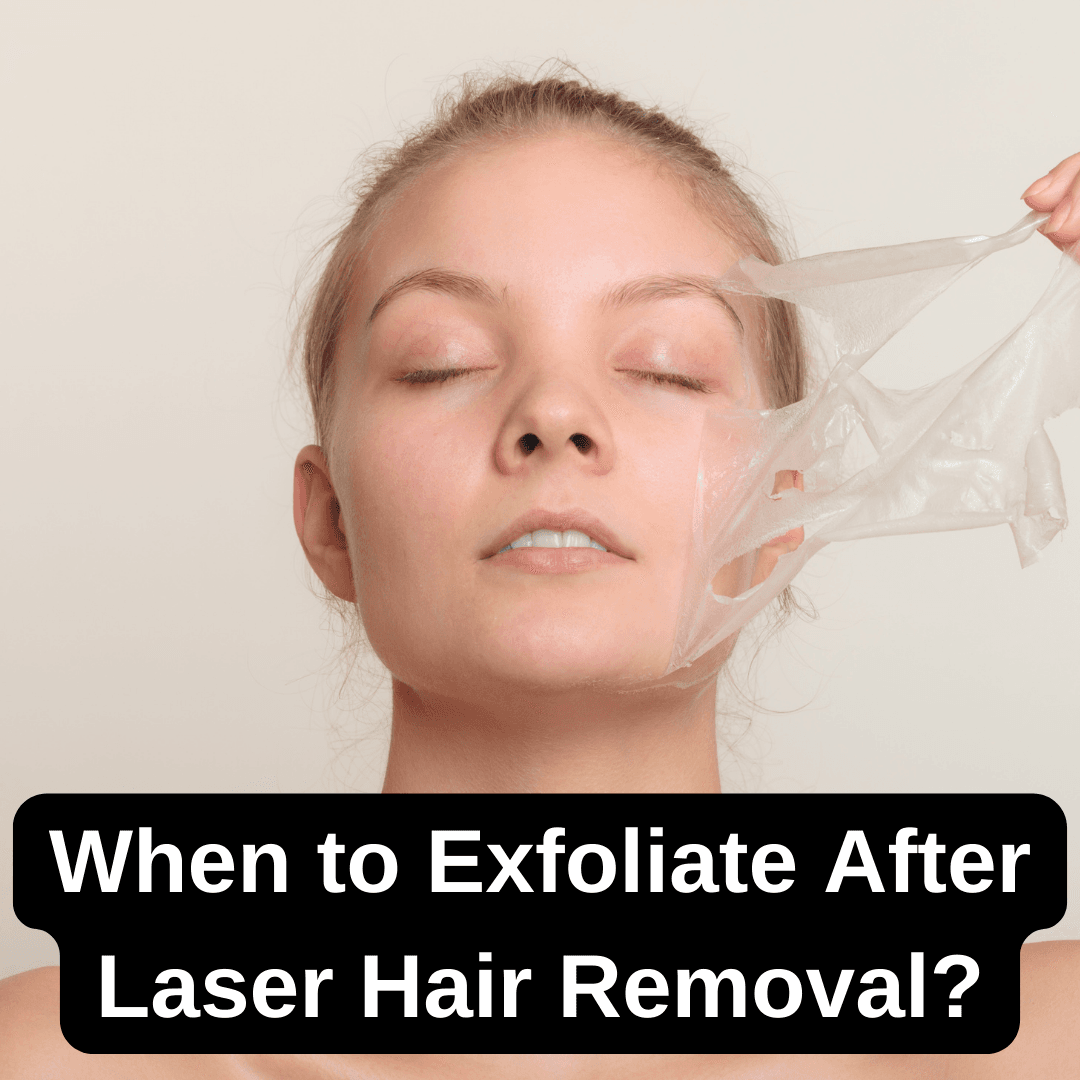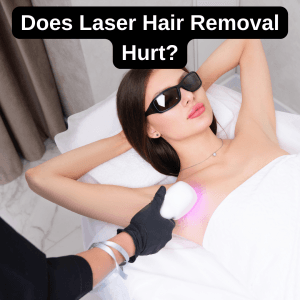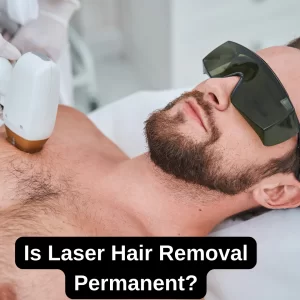Laser hair removal is one of the most effective ways to achieve smooth, hair-free skin. However, proper aftercare is essential to maximize results and prevent irritation. Exfoliation is a key step in this process, but doing it too soon can lead to redness, sensitivity, and even damage to the treated skin.
When should you exfoliate, and what methods are the safest? This guide covers:
- The safest time to exfoliate after laser hair removal
- The best exfoliation techniques for post-laser skin
- Common mistakes to avoid
- How to care for your skin after exfoliation
Why Exfoliation is Important After Laser Hair Removal
Exfoliation is an essential part of any skincare routine, and after laser hair removal, it plays a crucial role in removing dead hair and preventing ingrown hairs. Exfoliation plays a crucial role in preventing ingrown hairs, whether you choose waxing or an epilator. This guide offers tips to maintain smooth skin after hair removal.
Laser hair removal works by targeting hair follicles with concentrated light energy, disrupting hair growth at its root. To understand how laser hair removal affects the skin and hair follicles in more detail, check out our in-depth guide: Laser Hair Removal: How Does It Work?
Exfoliation helps remove dead skin cells and loosen treated hairs, allowing them to shed naturally. Here is why exfoliating after laser hair removal is essential:
- It prevents ingrown hairs by clearing out blocked follicles.
- It speeds up the shedding process of treated hair.
- It keeps the skin smooth and free of buildup.
Exfoliating too early, however, can cause irritation, redness, and sensitivity. It is essential to wait until the skin is ready before introducing exfoliation into your skincare routine.
When Can You Safely Start Exfoliating?
The ideal time to start exfoliating depends on skin sensitivity and the intensity of the laser treatment.
| Skin Type | When to Start Exfoliating |
| Normal Skin | 3-4 days after treatment |
| Sensitive Skin | 5-7 days after treatment |
| Coarse Hair Areas | 4-6 days after treatment |
How to Tell If Your Skin Is Ready for Exfoliation
- The treated area is no longer red or irritated.
- No signs of tenderness or sensitivity.
- The skin has returned to its normal texture.
If the skin still feels tender or irritated, waiting an extra day before exfoliating is recommended.
If you’re also curious about the differences between IPL and laser, check out our Intense Pulsed Light vs. Laser Guide.
Best Exfoliation Methods After Laser Hair Removal
Once the skin is fully healed, choosing a gentle exfoliation method is essential to avoid irritation.
Safe Exfoliation Methods
- Soft washcloth or exfoliating mitt: Gently buff the skin in circular motions.
- Mild chemical exfoliants (AHA/BHA): Helps loosen dead skin without scrubbing.
- Sugar or oatmeal-based scrubs: Natural and gentle alternatives.
For those exploring alternative hair removal methods, you may also be interested in our step-by-step guide on How to Wax Arms.
Exfoliation Methods to Avoid
- Harsh scrubs with large particles, which can cause micro-tears.
- Loofahs or rough sponges, which are too abrasive for newly treated skin.
- Strong acids, such as high-concentration glycolic acid, which can lead to irritation.
To understand more about laser hair removal processes and how to care for your skin afterward, learn when it’s best to exfoliate after laser hair removal.
If you’re wondering whether facial waxing is a good alternative, our guide on Is It Bad to Wax Your Face? discusses the pros and cons.
Step-by-Step Guide to Exfoliating After Laser Hair Removal
If the skin is ready for exfoliation, follow these steps for a safe and effective routine:
- Wait until the skin has fully recovered, typically 3-5 days.
- Use lukewarm water to soften the skin before exfoliating.
- Apply a mild exfoliant in circular motions with light pressure.
- Rinse thoroughly and pat dry with a soft towel.
- Moisturize immediately with a fragrance-free lotion to keep the skin hydrated.
- Apply SPF 30+ sunscreen if exposed to sunlight.
How Often Should You Exfoliate?
Exfoliation frequency depends on skin type and sensitivity level.
| Skin Type | Recommended Frequency |
| Oily/Combination | 3 times per week |
| Normal | 2-3 times per week |
| Dry/Sensitive | 1-2 times per week |
If the skin becomes red or irritated, reducing exfoliation frequency is recommended, as excessive exfoliation can damage the skin barrier.
Lesser-Known but Highly Effective Exfoliation Tips After Laser Hair Removal
This section should be placed before the “Common Mistakes to Avoid” section, as it provides unique insights that users would not typically find in standard guides. It enhances the depth of the article and makes it more authoritative.
Most people are familiar with basic exfoliation techniques, but there are several little-known yet highly effective strategies that can significantly improve skin recovery after laser hair removal. Below are some scientifically backed, surprising facts that can enhance your post-laser skincare routine.
Lactic Acid May Be Safer Than Glycolic Acid for Post-Laser Exfoliation
Many people opt for glycolic acid or salicylic acid as their primary exfoliating agents. However, these can often be too harsh on laser-treated skin. A better alternative may be lactic acid, a gentler alpha hydroxy acid (AHA) that not only exfoliates but also helps retain moisture.
- Lactic acid is milder and less likely to cause irritation.
- It helps maintain the skin’s natural hydration barrier.
- It gently removes dead skin cells without excessive peeling or redness.
A study published in the Journal of Cosmetic Dermatology (2022) found that lactic acid promotes gentle exfoliation while supporting the skin’s moisture retention.
Nighttime Is the Best Time to Exfoliate Post-Laser
Most people assume that exfoliating in the morning or after a shower is best, but research suggests that nighttime exfoliation may be more beneficial after laser hair removal.
- The skin’s natural repair process is most active at night.
- Exfoliating at night reduces sun exposure, minimizing irritation risk.
- Moisturizers and serums absorb better after nighttime exfoliation.
Research published in the International Journal of Dermatology (2021) suggests that the skin barrier function weakens in the evening, making nighttime exfoliation more effective and less likely to cause irritation.
Source: https://www.ncbi.nlm.nih.gov/pmc/articles/PMC8503952
Aloe Vera Is Not Just a Soothing Agent—It Also Aids in Gentle Exfoliation
Aloe vera is commonly recommended for soothing post-laser skin, but many people don’t know that it also has mild exfoliating properties.
- Aloe vera contains natural enzymes that promote micro-exfoliation.
- It helps remove dead skin cells without causing irritation.
- It strengthens the skin’s moisture barrier, reducing post-laser dryness.
A study from the Journal of Clinical and Aesthetic Dermatology (2020) found that aloe vera contains proteolytic enzymes that aid in skin renewal and exfoliation.
Natural remedies can play an essential role in post-laser skincare. You can also explore Rose Water Benefits for soothing and hydrating your skin.
Ice Therapy Can Enhance the Effects of Exfoliation
Many people use cold therapy for pain relief after laser treatments, but few realize that applying ice before exfoliation can improve results.
- Cold therapy stimulates blood circulation, helping dead skin shed more efficiently.
- It reduces post-exfoliation inflammation, minimizing redness.
- Applying ice before exfoliation can make the process gentler on sensitive skin.
A study from the American Journal of Dermatology (2019) found that cooling the skin after laser treatment accelerates cell turnover and reduces inflammation.
Common Mistakes to Avoid
Many people unknowingly damage their skin by exfoliating incorrectly. The following mistakes should be avoided:
- Exfoliating too soon, which can cause redness, sensitivity, and irritation.
- Using harsh scrubs, which can worsen irritation.
- Skipping moisturizer, as hydration is essential for post-laser recovery.
- Exfoliating too often, as 2-3 times per week is enough to maintain smooth skin.
- Ignoring sun protection, as newly exfoliated skin is more sensitive to UV rays.
To maintain a balanced skincare routine, knowing how often to cleanse and exfoliate is crucial. Read our article on How Many Times to Wash and Exfoliate Face.
How to Care for Your Skin After Exfoliation
After exfoliating, proper aftercare is crucial to maintain smooth and irritation-free skin.
- Apply a soothing moisturizer with no fragrance or harsh chemicals.
- Wear loose clothing to avoid friction on the treated areas.
- Avoid hot showers and steam rooms, as heat can further irritate freshly exfoliated skin.
- Use sunscreen daily to protect the skin from UV damage.
Frequently Asked Questions
Can I exfoliate the same day as laser hair removal?
No, exfoliating immediately after laser treatment can irritate the skin. It is best to wait at least 3-5 days.
If you’re wondering how many sessions are needed for other hair removal methods, check out our guide: How Many Sessions for Electrolysis?.
What is the best exfoliant to use after laser hair removal?
A gentle washcloth or mild AHA/BHA exfoliant is recommended. Harsh scrubs should be avoided.
How often should I exfoliate after laser treatment?
Two to three times per week is ideal, as over-exfoliation can lead to dryness and irritation.
Does exfoliating speed up hair shedding after laser treatment?
Yes, gentle exfoliation helps loosen and remove dead hair, accelerating the shedding process.
Final Takeaways
- Wait at least 3-7 days before exfoliating, depending on skin type.
- Use gentle exfoliants such as soft washcloths or mild AHA/BHA formulas.
- Avoid harsh scrubs and strong acids that can damage sensitive skin.
- Moisturize and apply SPF 30+ daily to protect treated areas.
- Exfoliate 2-3 times per week to keep the skin smooth and prevent ingrown hairs.
The information provided in this article is for educational and informational purposes only. It is not a substitute for professional medical advice, diagnosis, or treatment. If you have concerns about your skin or post-laser care, consult a licensed dermatologist or healthcare provider.
If you’re considering full-body laser treatments, our in-depth article on Brazilian Laser Hair Removal covers everything you need to know.
If you have any questions about when to exfoliate after laser hair removal, the best exfoliation techniques, or post-laser skincare, our experts are here to help.
Our team will be happy to provide guidance based on your skin type and laser treatment experience.
Scientific References and Sources
- Goldberg, D. J. (2022). “Laser Hair Removal: Principles and Practice.” Journal of Cosmetic Dermatology.
- Fischer, D. L., & Krull, E. (2021). “The Role of Chemical Exfoliants in Post-Laser Skincare.” International Journal of Dermatology.
- American Academy of Dermatology. (2023). “Post-Laser Treatment Skincare Guidelines.”
If you found this guide helpful and want to learn more about laser hair removal, post-treatment care, and effective hair removal methods, visit our homepage for the latest expert insights and in-depth articles.

Certified Laser Hair Removal Specialist & Licensed Laser Practitioner
With 17+ years of hands-on experience in laser hair removal, She is a certified laser practitioner and master trainer with advanced credentials in diode laser systems and women’s skincare. She has led over 200,000 successful sessions, combining deep technical expertise with a strong academic foundation. Known for her professional integrity and results-driven approach, she ensures all guidance is scientifically grounded and client-focused.





